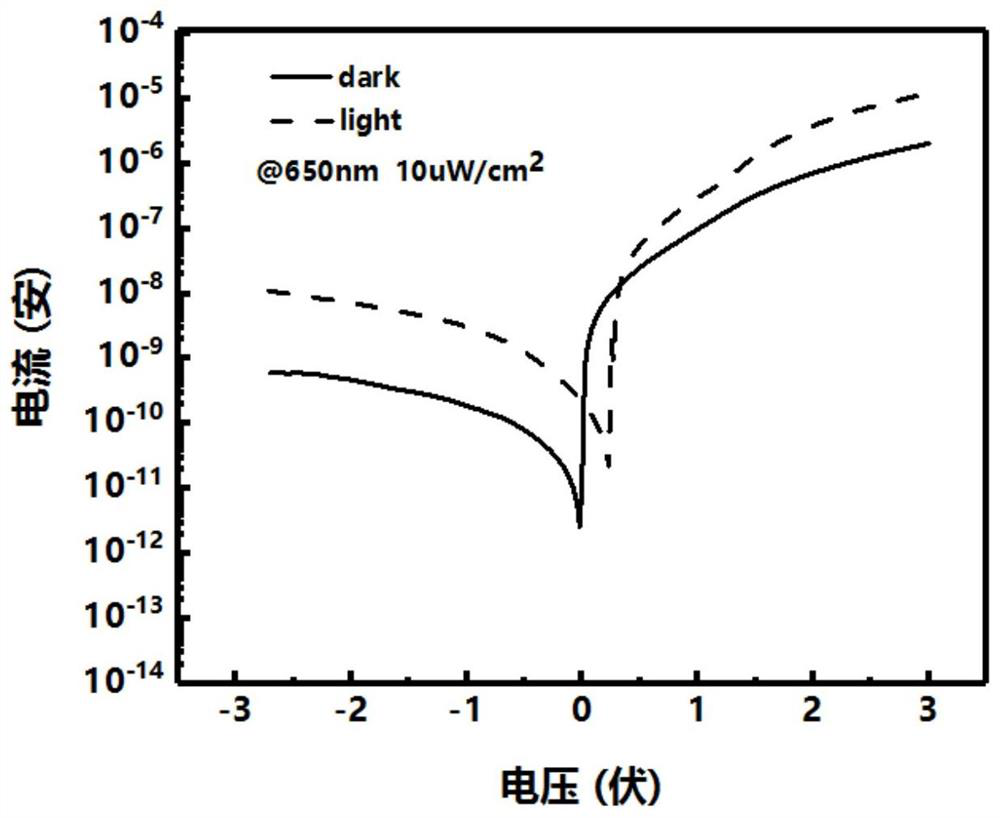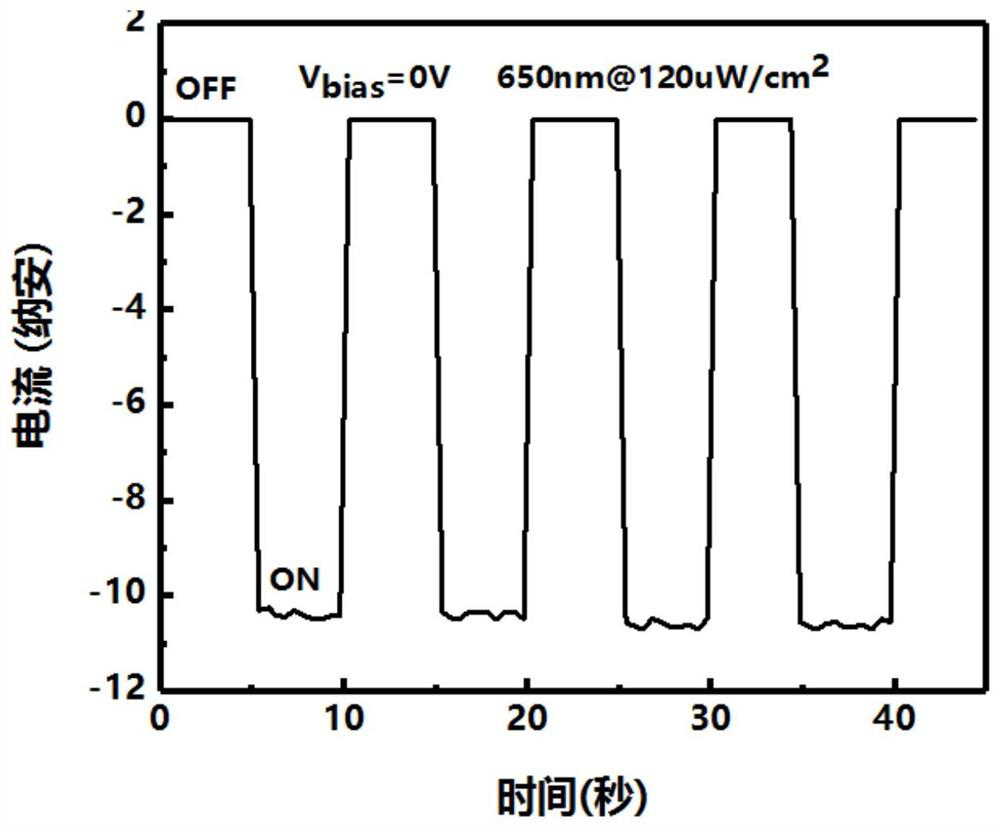A graphene/palladium diselenide/silicon heterojunction self-driven photodetector
A photodetector and silicon heterojunction technology, applied in the field of photodetection, can solve the problems of narrow detection bandwidth, slow response time, difficult integration, etc., and achieve the effect of reducing interface recombination, facilitating separation, and high responsivity
- Summary
- Abstract
- Description
- Claims
- Application Information
AI Technical Summary
Problems solved by technology
Method used
Image
Examples
Embodiment Construction
[0023] In order to facilitate those skilled in the art to understand the technical content of the present invention, the content of the present invention will be further explained below in conjunction with the accompanying drawings.
[0024] Such as figure 1 Shown, graphene / palladium selenide / silicon device of the present invention comprises graphene layer 1 successively from top to bottom, palladium diselenide layer 2, gold / indium electrode layer (or silver electrode layer) 3, silicon dioxide Insulation layer 4, n-type silicon substrate 5.
[0025] Further, the electrode 3 is a gold / indium alloy, wherein the gold electrode must be on the surface of the indium electrode layer, and the thickness of the gold layer is 50nm-150nm, and the thickness of the indium layer is 10nm-50nm, or directly replace it with a silver electrode with a thickness of 60nm-200nm .
[0026] Further, the area between the inner radius of the electrode and the n-type silicon round edge of the opening in...
PUM
| Property | Measurement | Unit |
|---|---|---|
| thickness | aaaaa | aaaaa |
| thickness | aaaaa | aaaaa |
| thickness | aaaaa | aaaaa |
Abstract
Description
Claims
Application Information
 Login to View More
Login to View More - R&D
- Intellectual Property
- Life Sciences
- Materials
- Tech Scout
- Unparalleled Data Quality
- Higher Quality Content
- 60% Fewer Hallucinations
Browse by: Latest US Patents, China's latest patents, Technical Efficacy Thesaurus, Application Domain, Technology Topic, Popular Technical Reports.
© 2025 PatSnap. All rights reserved.Legal|Privacy policy|Modern Slavery Act Transparency Statement|Sitemap|About US| Contact US: help@patsnap.com



